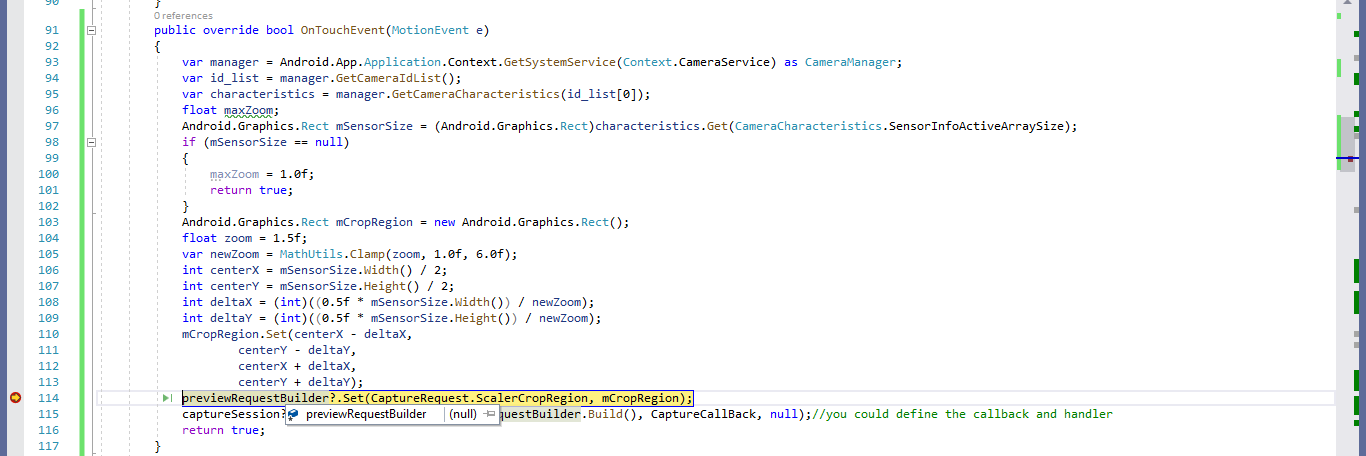 now am implementing zoomin and zoomout when before taking picture its not working properly, But its not working properly? Is there any example? I call that function when device recognize pinch gesture. Thank you in advance.
now am implementing zoomin and zoomout when before taking picture its not working properly, But its not working properly? Is there any example? I call that function when device recognize pinch gesture. Thank you in advance.
public override bool OnTouchEvent(MotionEvent e)
{
global::Android.Hardware.Camera.Parameters parameters = camera.GetParameters();
maximumZoomLevel = (float)cameraCharacteristics?.Get(CameraCharacteristics.ScalerAvailableMaxDigitalZoom);
Android.Graphics.Rect rect = (Android.Graphics.Rect)cameraCharacteristics?.Get(CameraCharacteristics.SensorInfoActiveArraySize);
if (rect == null) return false;
float currentFingerSpacing;
if (e.PointerCount == 2)
{
currentFingerSpacing = getFingerSpacing(e);
float delta = 0.05f;
if (fingerSpacing != 0)
{
if (currentFingerSpacing > fingerSpacing)
{ //Don't over zoom-in
if ((maximumZoomLevel - zoomLevel) <= delta)
{
delta = maximumZoomLevel - zoomLevel;
}
zoomLevel = zoomLevel + delta;
}
else if (currentFingerSpacing < fingerSpacing)
{ //Don't over zoom-out
if ((zoomLevel - delta) < 1f)
{
delta = zoomLevel - 1f;
}
zoomLevel = zoomLevel - delta;
}
float ratio = (float)1 / zoomLevel;
int croppedWidth = (int)(rect.Width() - Math.Round((float)rect.Width() * ratio));
int croppedHeight = (int)(rect.Height() - Math.Round((float)rect.Height() * ratio));
//Finally, zoom represents the zoomed visible area
zoom = new Android.Graphics.Rect(croppedWidth / 2, croppedHeight / 2,
rect.Width() - croppedWidth / 2, rect.Height() - croppedHeight / 2);
previewRequestBuilder.Set(CaptureRequest.ScalerCropRegion, zoom);
}
fingerSpacing = currentFingerSpacing;
captureSession.SetRepeatingRequest(previewRequestBuilder.Build(), CaptureCallBack, null);
}
return true;
}
